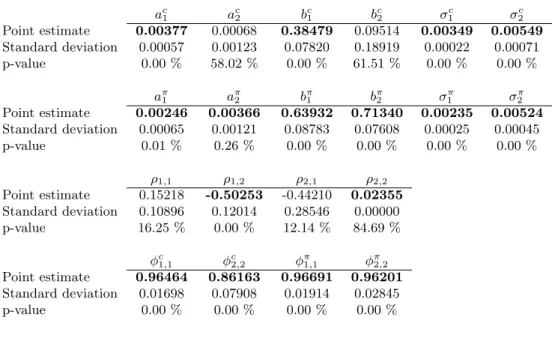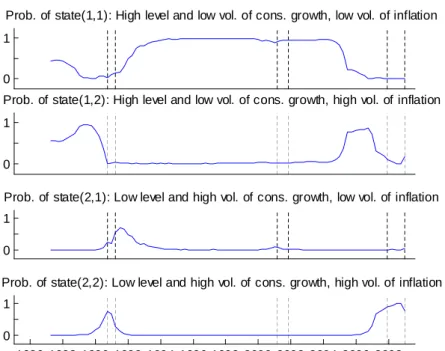A Reduced Form Model of Default Spreads with Markov-Switching Macroeconomics Factors
Texte intégral
Figure




Documents relatifs
Comvariance was first introduced to economics by Deardorff (1982), who used this measurement to correlate three factors in international trading. Furthermore, we
- Using generating functions and classical identities due to Euler and Gauss we can extend and simplify some of the results in the paper "Performance Considérations on a
As stated in the beginning, the real purpose of these notes is not to simply repeat the standard calculation of the derivative of the logarithm function, but to replace the
S’il s’agit de passer de l’orbite ext´ erieure ` a l’orbite int´ erieure, il suffit d’appliquer un d´ ecr´ ement de vitesse ∆v B au point B (i.e. d’utiliser des
In order to do so, compare the free energy of a perfectly ordered system with the free energy of a partially disordered case that introduces the less energetic frustrations
Hence, we leverage this flexibility in out- come selection to minimize negative side effects in reduced models by using more informative outcomes in the risky states and using
Among this class of methods there are ones which use approximation both an epigraph of the objective function and a feasible set of the initial problem to construct iteration
Then, using a smoothing inequality for the quenched free energy and second moment estimates for the quenched partition function, combined with decoupling inequalities, we prove





